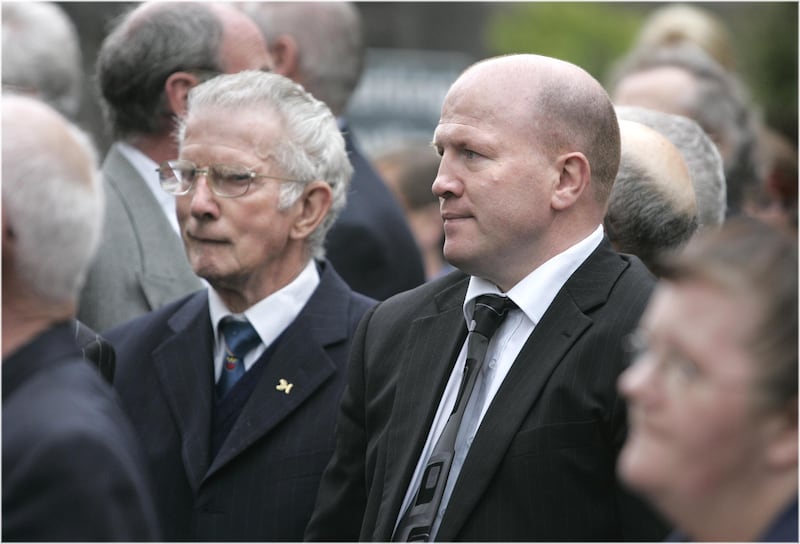Former Olympic champion Michael Carruth and his family have been among a group of relatives who have visited Kilmainham Gaol on Thursday to mark the centenary of the first executions of the Civil War.
On November 17th, 1922 four men were executed by firing squad in the female exercise yard of the jail – James Fisher (18), John Gaffney (20), Richard Twohig (19) and Peter Cassidy (21). The State executed 81 men in the space of six months during the Civil War from November 1922 to May 1923.
Mr Carruth’s late father Austin was a nephew of Gaffney. His mother Bridget Carruth née Gaffney was John Gaffney’s sister.
Gaffney of 3 Usher’s Quay was charged with the possession of a revolver on October 27th, 1922. On September 27th, 1922 the Dáil made an emergency declaration stating that the carrying of an unauthorised firearm was a capital crime punishable by death.
READ MORE
Austin Carruth was Michael’s coach when he sensationally won gold in the welterweight category at the Barcelona Olympics in 1992. Austin Carruth died in 2011.

Mr Carruth said he was “immensely proud” to represent his father at a private wreathlaying ceremony in Kilmainham Gaol which involved 20 members of the wider Carruth family.
The last letters of all four were recalled. Relatives of the other families involved also laid wreaths while a lone piper played the Last Post.
“It’s a thing that my father would have to loved to be have been able to do today. Imagine going to bed knowing that the next day would be your last on Earth,” he said. “The bravery those men have shown is immense. None of us hopefully will ever be in that position. He was fighting for a cause and for something that he believed in.”
“We knew about him (John Gaffney) in the family. We were always told that Uncle Joe was part of the IRA. There was a civil war at the time. When you are growing up and listening to it, you don’t pay much attention to it,” he recalled.
“But when I saw his name on the plaque in the yard of Kilmainham Gaol I got a bit emotional. He gave the biggest sacrifice - his own life for his country. There are not many people who can do that.”
Ironically both Mr Carruth and his brother Fergal joined the Irish Defence Forces, the same army involved in the executions of the four men who were shot together.
“You get to hear a million stories about why they were executed. It was said they entrapped - they were given weapons, put back on the street, they were rearrested, tried and convicted.”
Mr Carruth said he does not think of his great-uncle’s execution in political terms. “What does it mean to anybody now? They died for a cause that they believed in back in that time.”
The centenary of the executions coincided with the opening of an exhibition at Kilmainham Gaol entitled “I am to die for Ireland” which features the last letters of James Fisher, the youngest to die, and Peter Cassidy.












